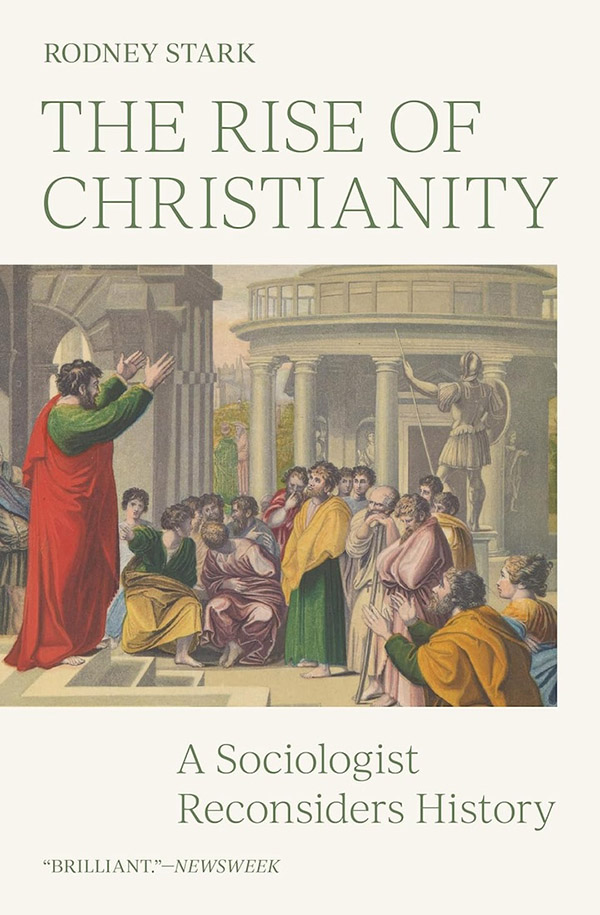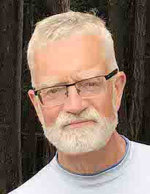The Mundane, Not Just Miracles, Converts the World
- AUGUSTE MEYRAT
For many Christians, the rise of Christianity is often treated like a miraculous, spectacular phenomenon.

In the popular imagination, the first disciples of Christ traveled the known world, giving fiery sermons, resurrecting corpses, performing mass exorcisms, and baptizing pagans by the thousands. And even when the Roman emperors periodically tortured and crucified Christians, nearly all of them eagerly died a martyr's death.
While some of this was the case, there's a little more to the story. In the late Rodney Stark's recently republished classic The Rise of Christianity, which is packed to the brim with facts and scholarship, the growth of early Christianity is shown to be far more prosaic. The conversion of the Roman Empire was more a demographic and social phenomenon than a theological one. Christian households maintained steady growth throughout the centuries while pagan households dwindled into irrelevance.
This premise doesn't entail shaking one's faith in Christianity's miraculous origins. As Stark explains in detail, all this reveals a beautiful harmony of circumstances that has all the hallmarks of divine providence.
Moreover, the real story of Christianity's spread is quite instructive—and replicable—for Christians today. While it's always a good idea to pray for more interventions of the Holy Spirit, Christians should be able to recognize how evangelization generally works. Ironically, the best person to do this was Stark, an agnostic sociologist.
After laying out his methodology and background, he begins his argument with simple math. From the middle of the first century to the middle of the fourth century, the Christian community grew from a few hundred followers to nearly half the empire. Over three centuries, Stark determines that the Church grew at a rate of 40 percent each decade. This is consistent with Stark's studies of Church of Latter Days Saints (Mormons), which similarly grew from a small group in New England in the early 19th century to a global organization of over ten million today.
Stark then explains why Christianity grew at such a rapid rate and who the first converts actually were. First, he debunks the idea that the first Christians were proto-Marxists organizing a movement that would appeal to the masses. Available data indicates that the first Christians were more educated than average: "[P]eople must have a degree of privilege to have the sophistication needed to understand new religions and to recognize a need for them."
So who were these privileged Romans? Debunking another popular misconception, Stark asserts that they were often Hellenistic Jews in the Diaspora. Although treated as the antagonists in the Gospels and some of the early Christian writers, they are really the great protagonists of early Church history. Many synagogues in the empire served as incubators for the first Christian communities. Not only is there documentation to show this, but Stark suggests that the inclusion of the Old Testament in the Christian Bible and the failure of the Marcionite heresy, which only recognized the God of the New Testament, prove that Christianity was not primarily a Gentile movement, but a Jewish one.
It was also feminine, with women making up the great majority of first converts. Considering the misogynist culture of the Roman Empire, this is understandable. Because of sex-selective infanticide, botched abortions, and nonexistent female healthcare, men greatly outnumbered women. This disparity correlated with the objectification of women and the promiscuity of men, most of whom flouted the expectation to marry and have children.
By contrast, Christianity elevated the status of both men and women who were no longer treated as objects to exploit, but children of God entitled to reverence and respect. Because women outnumbered men in most Christian congregations, many of them would marry outside the Church, then often converting their pagan husbands and raising their children in the faith.
As one would expect, these Christian couples were much more fruitful than the pagan ones, a difference that would become more significant with each successive generation. Stark also shows how this culture of life worked into the resilience of Christian communities during plagues. While the pagans, including the great physician Galen, would run for the hills during an epidemic, Christians would provide basic care to everyone, which in turn offered a powerful witness to non-Christians and acted as an effective tool for expanding Christian networks.
Finally, Stark discusses the physical context of Christianity's rise, which generally took place in the biggest cities of the empire. These cities were not the orderly arrangement of columns and forums with men in clean white togas, as frequently depicted by the Renaissance painters. Rather, Roman cities were crowded, dirty, disorganized, and fractious. In his description of Antioch, one of the first sites of Christianity, Stark reinforces the larger point that Christianity "served as a revitalization movement that arose in response to the misery, chaos, fear, and brutality of life in the urban Greco-Roman world."
Paradoxically, Stark's demystification of the spread of Christianity in the first centuries leads him to conclude that there is something truly special in Christian doctrine and the subsequent faith of the martyrs to sustain such consistent growth: "I believe that it was [Christianity's] particular religious doctrines that permitted Christianity to be among the most sweeping and successful revitalization movements in history." This is about as close to belief as Stark comes in his analysis, though faithful readers will easily see God's truth at the heart of it.
And it's important that they do. Many parallels exist between the pre-Christian and post-Christian West. And the same virtues that allowed the Church to bring order to the surrounding chaos will likely do the same today.
No doubt, there's disagreement on how to re-evangelize the world and whether to change various Church teachings to accommodate modern audiences, but one thing must remain constant: Christians must keep the faith and preserve the culture of life. Miracles would be nice in the short run, but in the long run, a steady commitment to the true faith in everyday matters will convert the world.
 I hope you appreciated this piece. Before you move on, please consider taking the step of supporting CERC's mission with just $3.
I hope you appreciated this piece. Before you move on, please consider taking the step of supporting CERC's mission with just $3.
When you Google the answer to a question about faith and morals or current events in the Church, you often have to wade through dozens of misleading secular articles before finding a reliable source. CERC will give you faithful, reliable, well-reasoned answers to your questions—with just one click.
CERC is entirely reader supported. Around the world, readers can access CERC's free resources because of people like you. You give us the ability to provide the truth unfettered by algorithm censorship and secular-favored rankings.
Please consider supporting us just once with $3, or better yet, become a Guardian of Truth and support us every month with a little more. Thank you.
J. Fraser Field
Founder of CERC

Acknowledgement
 Auguste Meyrat. "The Mundane, Not Just Miracles, Converts the World." The Catholic Thing (March 6, 2024).
Auguste Meyrat. "The Mundane, Not Just Miracles, Converts the World." The Catholic Thing (March 6, 2024).
Reprinted with permission from The Catholic Thing.
The Author
Auguste Meyrat is an English teacher in the Dallas area. He holds an MA in Humanities and an MEd in Educational Leadership. He is the senior editor of The Everyman and has written essays for The Federalist, The American Thinker, and The American Conservative as well as the Dallas Institute of Humanities and Culture.
Copyright © 2024

